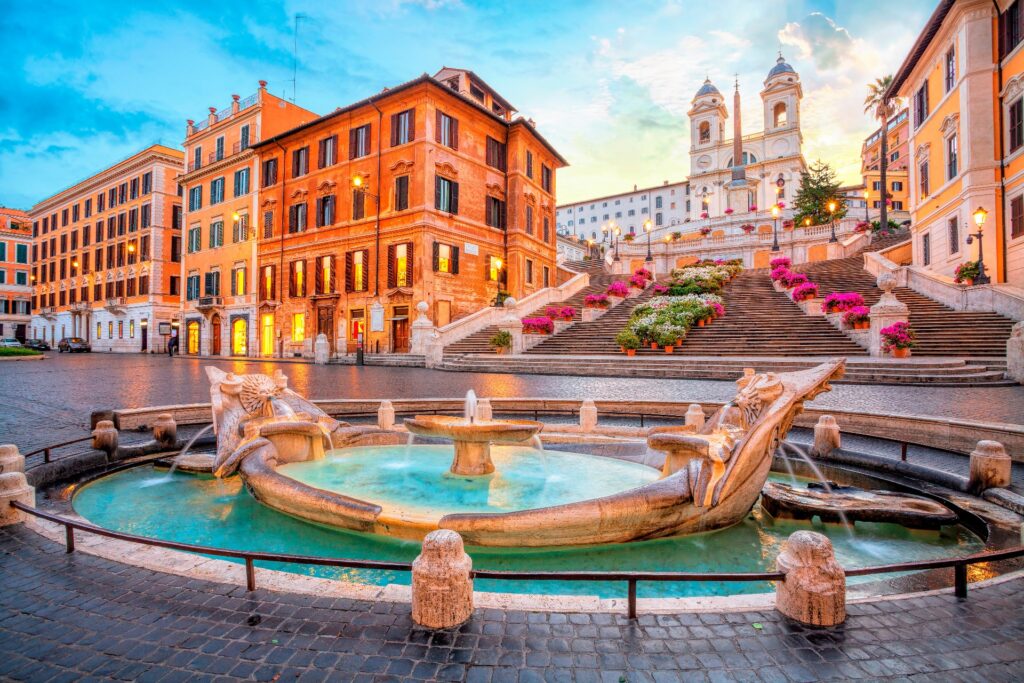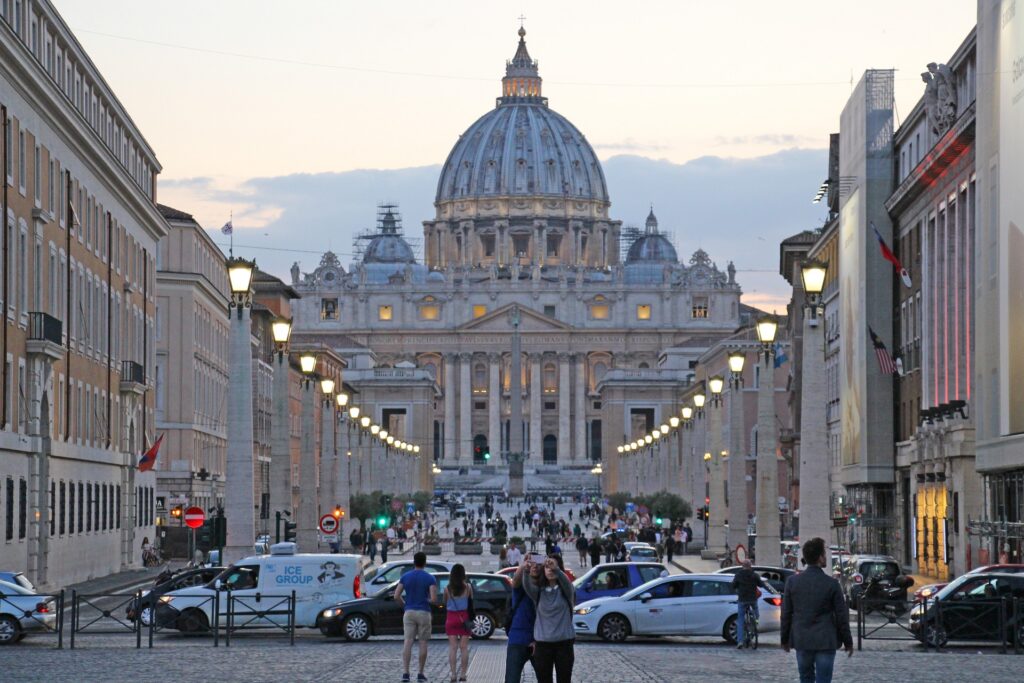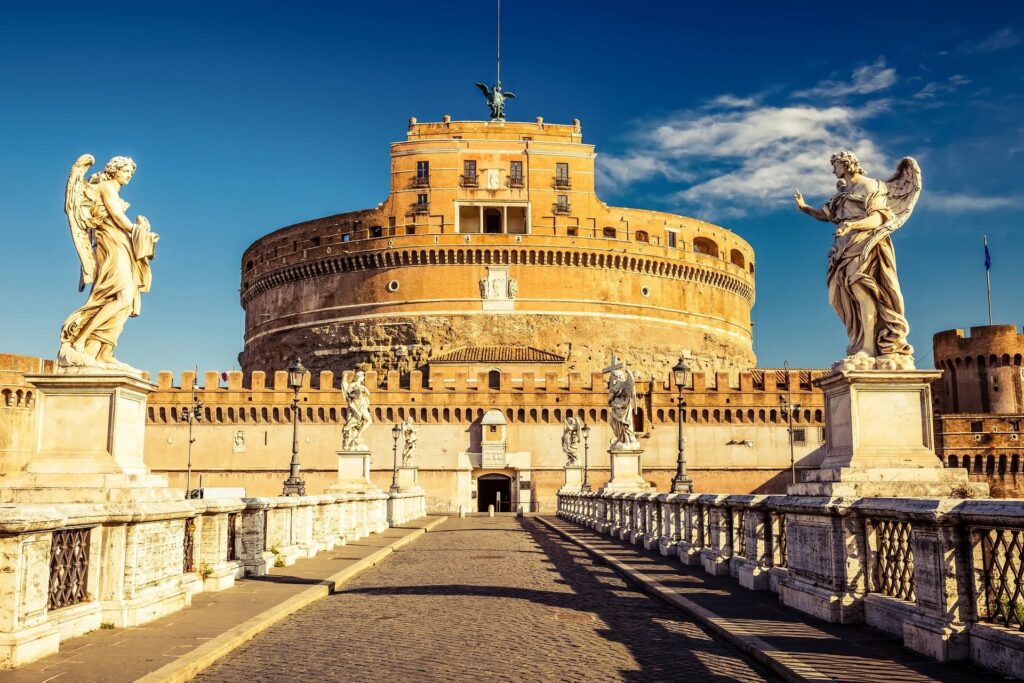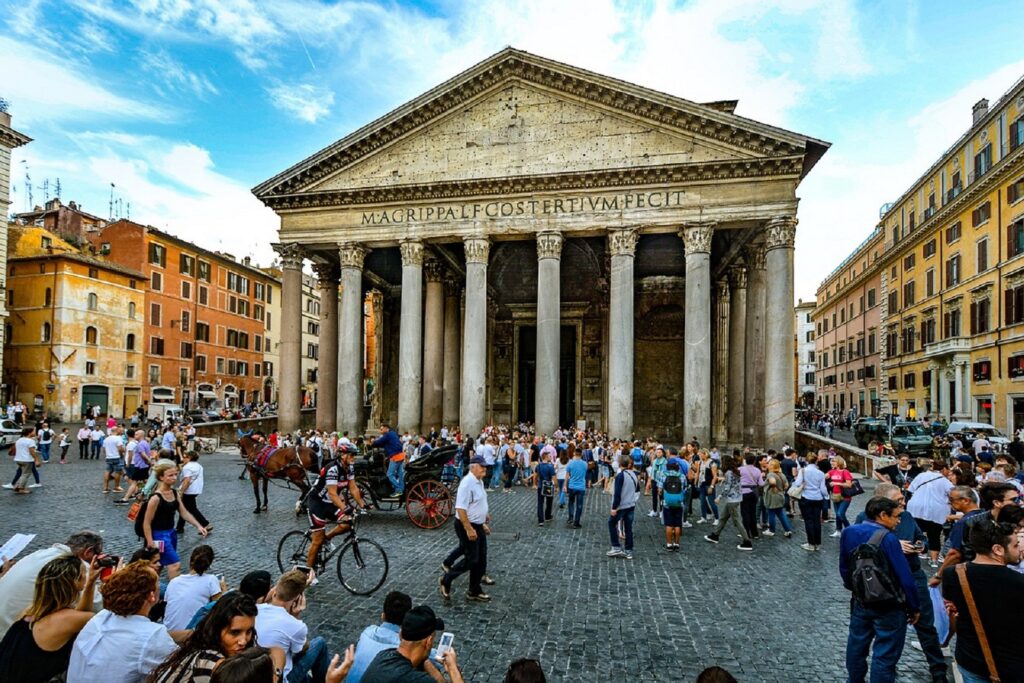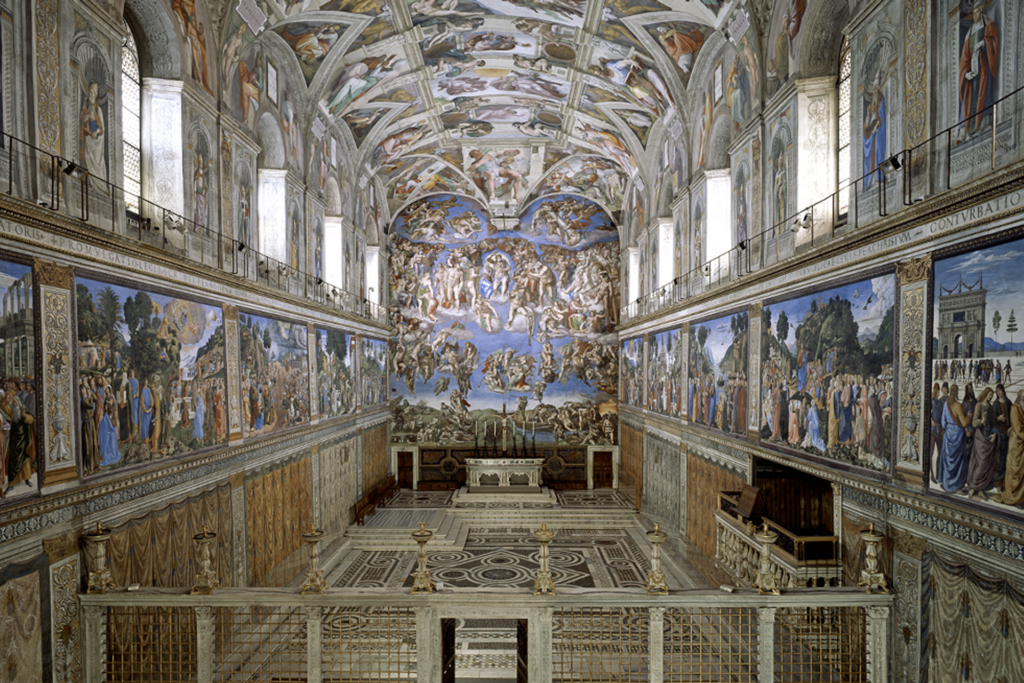VENUE
TRAVEL
AIRPLANE
The nearest airport are “Fiumicino Leonardo da Vinci” and “Ciampino”. From there it is possible to reach “event location” by train, transport public or by taxi. Train: Fiumicino – Roma Ostiense + Underground B (58 min) Taxi: (22 min)
TRAIN
- The are many trains from all over Italy stop in Rome.
- The railway station (Termini) is at a 10 km distance from the “event location”.
- There are taxi and buses stop in front of the station, connecting you to the accommodation and event location.
URBAN TRANSPORT & PARKING
There are some applications for public transport, including domestic connections integrated with the local travel solutions, buses and trains. It can also be used for paying transport services.
APP: MYCYCERO
- Apple Store: https://apps.apple.com/it/app/mycicero/id595700208
- Google Play: https://play.google.com/store/apps/details?id=net.pluservice.myCicero
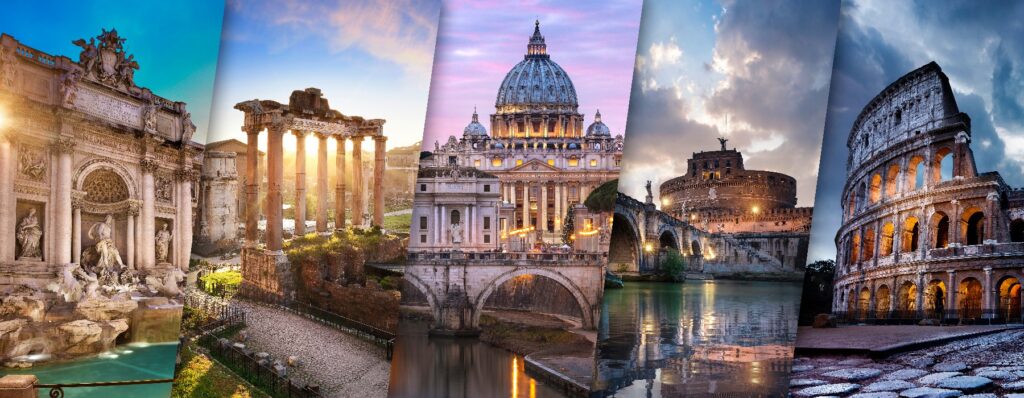
VENUE & ATTRACTIONS ROME
Called “Eternal city” the capital of Italy, is a sprawling cosmopolitan city displaying nearly 3.000 years of globally influential art, architecture and culture.
Ancient ruins like those of the Forum and the Colosseum evoke the power of the ancient Roman Empire.
The historic centre of the city is a UNESCO World Heritage Site. With wonderful palaces, thousand-year-old churches, grand Romantic ruins, opulent monuments, ornate statues and graceful fountains, Rome has an immensely rich historical heritage, making it one of Europe’s and the world’s most visited, famous, influential and beautiful capitals.
TOURIST ATTRACTIONS
Colosseum The number 1 attraction of Rome. The large amphitheatre that housed 65,000 spectators in Roman days. Gladiators battled each other as well as wild animals in the Colosseum’s arena. In the giant ‘ruins’, you can visit the stands, the arena and the underground spaces of the largest Roman amphitheatre. It is considered one of the seven modern wonders of the
Trevi Fountain The most famous fountain in Rome and perhaps even the world. This baroque fountain, located on the Piazza di Trevi, was built in the 18th The landmark and monument displays the god of the sea, Neptune on his chariot. No visit or Rome sightseeing is complete without tossing a coin in the Trevi Fountain.
Pantheon One of the best maintained buildings from Roman times. What function the building had in those days is still not clear, but the Pantheon was given to the pope by emperor Hadrian in 608. The current church has several unique funerary monuments as well as a remarkably large and open dome.
Peter’s Basilica is the spiritual centre of the Catholic Church and residence of the pope. The enormous basilica, located in the independent state of Vatican City and next to St Peter’s Square, was built on what is believed to be the grave of Peter.
Vatican Museums & Sistine Chapel Over the centuries, the popes amassed an enormous art collection varying from Roman objects and religious relics to countless. You can visit 54 richly decorated rooms and view these art treasures of the Catholic church. The chapel with lovely frescos by Michelangelo that is mostly known as the site of conclave when a new pope is elected.
Roman sights of Forum Romanum & Palatine It was the centre of the ancient Roman Empire. During your visit , you will walk past Roman excavations and the archaeological park full of old temples, arches, market halls and other important buildings built there by different emperors.
Spanish Steps decent to the Piazza di Spagna, where you will find a distinctive fountain by Pietro Bernini. The 18th-century Spanish Steps have grown into a tourist hotspot, and the top of the stairs offers a gorgeous view of
Sights of Trastevere On the opposite bank of the river Tiber lies the old working-class neighbourhood of Rome. Here you can get lost in a maze of narrow streets, see old medieval houses, and go for a lively night out in the area’s many restaurants and
Castel Sant’Angelo Originally, the 2nd-century it was a mausoleum for emperor Hadrian. The Castle of the Holy Angel was part of Rome’s defences and offered a place where popes could shelter, as the Vatican was connected to it by a tunne

